
Commentary
-
August 10, 2007
The new concert venue or the new television?

When the Metropolitan Opera announced last year that some of its productions were going to be beamed to movie theaters, you could count me as one of the skeptics. With attendance down, an artform that’s rather commercially stuck in the past didn’t seem like the proper antidote.
Then, I realized exactly how little I know about anything. I started hearing about packed houses all across the country. Even the more modern pieces were drawing well. Now,Playbill Arts just announced that the Met will be beefing up its schedule even more this year.
The Metropolitan Opera is set to present its high-definition simulcasts on up to 400 movie screens in the United States during the coming season — nearly triple the number of venues from last season.
The company announced today a renewed and extended deal with National CineMedia (NCM) to present the live Saturday afternoon broadcasts at between 300 and 400 cinemas across the country. The operas will be shown at participating AMC, Cinemark, Georgia Theater Company, National Amusements and Regal theaters; according to the Met and NCM, more affiliate locations are being added to NCM’s digital high-definition network.
The movie theater simulcasts were seen as a bold but risky venture when the Met launched them last season. In the event, they proved an enormous success, with more locations and screens being added over the course of the year and repeat presentations added at some locations. The program attracted press coverage all over the world, and the broadcasts themselves were extended during the season from the U.S., Canada and Great Britain to seven countries on three continents.
Good for them. It’s great to see not only supporting their local movie theaters, but opera as well. What does this mean for the future of movie theaters though? With a more obscure idea like this working, what will come next?
11 comments -
August 3, 2007
MobMov

Bitter about the price of your local theater? Sick of all that noise from annoying patrons? Want to go to a place where you can see a quality film on the big screen?
With all these expectations, why give your local theater a chance when you can DIY it! A new craze called MobMov (short for mobile movie) is catching like wildfire all over the world. Clubs of people in different cities bring a projector to a random location containing a large wall, usually an abandoned warehouse, and literally create a drive-in experience. I’d never even heard of it before I read this story in the San Francisco Chronicle.
The crescent moon over the Bay Bridge was a stunning twinkle of lights through the windshield, but all eyes were sharply focused on the flickering projections on the warehouse wall. We’re parked in a vacant lot in what must remain an undisclosed S.F. location. We are MobMov for the next few hours – a brief and nerdy flash mob of drive-in enthusiasts gathered to view the night’s feature presentation from the comfort of our bucket seats.
With bags of popcorn and Hot Tamales on the dashboard, about 15 cars nestle like sardines and tuned to the same radio frequency – the short-term sound system that serves as the modern-day speaker attached to the window ledge from drive-ins of years ago. The other reminder that this isn’t 1957: As we prepare for the feature presentation, the projected image is the familiar interface of Microsoft Windows, and the whole event is being fueled by the car battery of a Toyota RAV4.
Has anyone been to these? Does it indeed preserve the experience like they say it does?
-
July 27, 2007
Thanks, mom

Are you kidding me? So I was reading this New York Times article about Disney for the most part banning cigarette smoking in their films. It’ll be completely banished from their family films and discouraged from their others.
Disney’s action comes amid increasing pressure from advocacy groups and regulators for media companies to purge movies of cigarettes. In May, the Motion Picture Association of America announced that portrayals of smoking would be considered alongside sex and violence in assessing the suitability of movies for young viewers. Films that appear to glamorize smoking will risk a more restrictive rating.
Mr. Iger said in a letter to Representative Edward J. Markey, Democrat of Massachusetts, dated July 25 that Disney would also “discourage depictions of cigarette smoking” in pictures released by its Touchstone and Miramax units. Last month, Mr. Markey, chairman of the subcommittee on telecommunications, held hearings on the effects of movie images on children.
Now, let me get this straight. I’m not about to advocate cigarette smoking in any way, much less in a medium that touches millions. My problem is with the idea that this is being addressed in this manner.
-
July 20, 2007
All hail the pirate slayer!
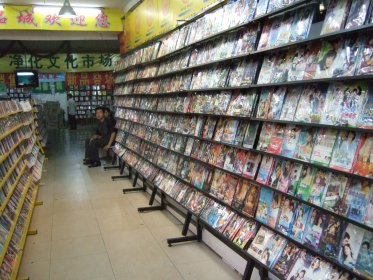
One of the hot topics on this site has always been the importance of maintaining a premium moviegoing experience. Even if that doesn’t always amount to superior sight, sound and seats, I think we’ll all agree that helpful employees is a big part of reaching that next level.
Talk of the quality of the average theater employee typically elicits scorn in these parts so I thought you’d appreciate this Allied News story about a kid truly earning his paycheck at his local theater. Christopher Payne carefully observed a possible movie pirate and used all means necessary to take him down. How about that?
For Marquee Cinemas employee Christopher Payne, being nicknamed the “pirate slayer” by co-workers has little to do with one-eyed, peg-legged treasure hunters and more to do with stopping what experts call “the biggest threat to the motion picture industry.”
Payne interrupted the illegal pirating of the movie “Pride” in May — a federal crime — helped recover the camcorder used, and also received a $500 reward along the way. Not bad for the 16-year-old Woodrow Wilson High School junior.
More than the billions of dollars lost by the growing trend, it’s the theater owners that suffer the most with this practice. While studios have other sources of revenue to tuck them in at night, theater owners have nothing if no one shows up.
-
July 13, 2007
Classic lives on
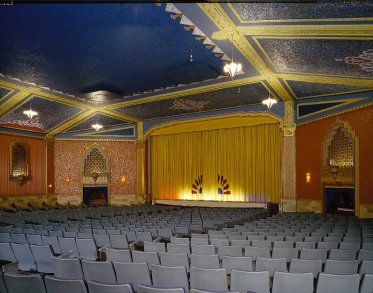
With so many classic theaters in danger, just saving one is enough to be a hero. But what if you saved a bunch? What if you become a leader in preservation even when faced with a tough market and an age where movies are no longer the focal point they once were?
I’ve always admired the Chicago-area Classic Cinemas chain for their championing of such treasures as the Tivoli, Lake, and York Theatres and thought it was about time to see how they managed to put it all off. This morning, I got on the phone with the chain’s owner and founder, Willis Johnson, and he gave me some insights.
MZ: What got you into the theater business?
WJ: I owned the Tivoli building and one tenant happened to be a theater. Around June 1978, the person running the theater, Oscar Bortman, walked away from the lease. I needed the theater to operate in order to pay the rent so I started looking for someone to run it. Unfortunately, I wasn’t too happy with the prospective tenants until Ed Doherty came to me and told me he’d run the Tivoli but only if he could just do the theater side, but not the business end. That was fine by me because all I knew was the business end. We reopened in August 1978.
MZ: There are many classic theaters in the Chicago area, many long since gone sadly. What are some of your childhood memories of those theaters?
WJ: Surprisingly, movie theaters weren’t really a big part of my life growing up. I’m sure I went. I just don’t remember much of it. There was the Don Theater in Downers Grove. They showed westerns. I don’t think I went though.
MZ: When did you know that your business was on the right track?
WJ: We got a good reception from the start. All it took was seven months and then we went from red to black.
MZ: When did you start acquiring other theaters?
WJ: After the Tivoli came the Park Forest on Christmas 1980. That was a great one cause it opened in 1950 so it was the last of an era. The York came after that, then the Lindo, all by 1982.
-
July 6, 2007
Not to be missed theaters
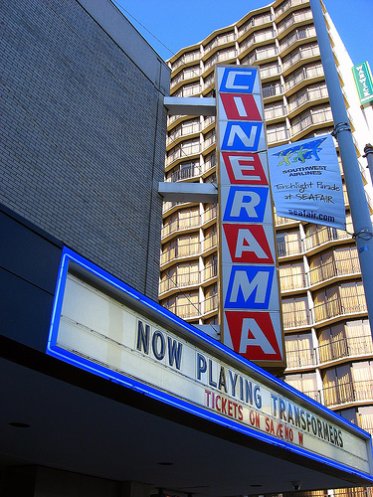
Opening up my e-mail yesterday, I came across a feature that Ross Melnick had contributed to on Forbes. It highlights some notable theaters still standing with almost all still doing first-run business. Don’t get too excited because most are the usual suspects.
When I go on trips, even if it’s just for the weekend, I always lookup the local theaters of note at my destination as well as on the way. With the next two months, a lot of us here in the Northern Hemisphere will be taking summer vacations and maybe coming near such a theater.
So I ask you, what one theater should have been included on this list? Forget about the fact that most of their choices were in major cities and that one was even a multiplex. What single-screen theater, anywhere in the world, is still showing first-run films and is worth the trip there to see it, even if you’re only remotely nearby (or worth a trip of its own if you’re really THAT HARDCORE! Oh yeah!)?
-
June 29, 2007
Sharing Cinema
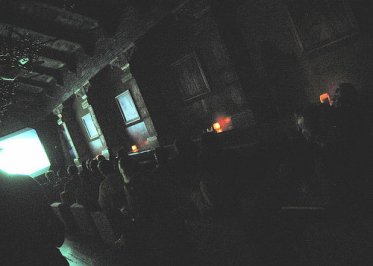
While writing comments on Cinema Sightlines the other day, I remembered a dreadful moviegoing experience only a year ago.
Unbeknownst to me, residing in Hollywood for almost 2 years at the time, I had been living in a bubble. Going out drinking at the local bars, eating at hole in the wall restaurants, visiting ArcLight and the Sunset 5 for an evening flick; I really never would bump into children. Surely on my evening jog to the gym down Sunset Boulevard, the families walking hand in hand were nowhere to be seen.
I was going to the El Capitan on opening night to see the film, “Cars,” when I got quite a rude awakening. As soon as I entered the auditorium, I was greeted with crying babies and toddlers throwing popcorn on the floor. The start of the movie didn’t make it any quieter and for the next two hours I heard as much soda slurping as I did Owen Wilson and Paul Newman. It felt like it had been ages since I’d even been inside a theater with someone not allowed to see R-rated picture, much less 1,000 people under the age of seven.
-
June 15, 2007
After dark
Whenever I tell people where I’m going on a Saturday night, they’re a bit shocked. Of all the odd places to go to the movies, nothing quite turns head like the neighborhood cemetary.
Here in Los Angeles, the Hollywood Forever Cemetary has a summer film series, Cinespia, where each Saturday a crowd of mostly 20’s/30’s piles in and watches a film projected onto the side of their mausoleum. Food and alcohol is welcome and they even have a DJ there to spin records before the film begins after dark. The schedule is always filled with classic/cult films sure to please the riled up audience.
When I went for the first time a year ago, I honestly believed I would be one of 50 signing up for this odd event. Man, was I wrong. After waiting in a seemingly neverending line on Santa Monica Boulevard for who knows how long, I realized people may not mind going to the movies in a cemetary. In fact, over 1000 people show up each week and it regularly sells out.
-
June 8, 2007
The forgotten homage
And here I thought I had Los Angeles covered. I’ve visited most of the surviving theaters and spent countless hours studying the ones lost but I’d never looked closely at one particular stretch of Main Street. I sure was surprised when someone sent me notice of the taking down of Frank Romero’s “Homage to the Downtown Movie Palaces” in the L.A. Downtown News.
I had to go see it in person. Now I don’t know much about art that adorns parking garages but I’m willing to bet this comes up at the top of the list. L.A. native Frank Romero has built a name for himself with an impressive portfolio spanning almost fifty years of paintings, ceramics and of course his large-scale murals. One of his most famous pieces of work was the “Going to the Olympics” mural that hung from the 101 in downtown Los Angeles.
In 1988, he completed the “Homage to the Downtown Movie Palaces” mural as a tribute to the theaters he grew up in on Broadway. It was about to reach its 20th Anniversary when the city announced a plan supported by the Community Redevelopment Agency to revitalize the street area in front of the parking structure on which it hangs. Part of the initiative includes taking down the mural and placing something more modern in its place.
While the plans are already in motion, I thought it would be worthwhile to get the artist’s take on the whole ordeal and maybe learn a bit more about the piece as well:
-
April 27, 2007
Another article about sequels
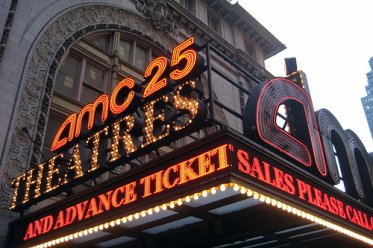
Each year around now, a slew of summer movie pieces pop up in magazines and newspapers. We’re suddenly bombarded with talk of what’s going to be this year’s indie breakout hit and whether the counter-programming of releasing romantic comedies the same weekend as blockbusters will work this year. While these and others certainly frequent the headlines, no subject is more superfluous than sequels.
We’re constantly reminded that this year, guess what, there’s a whole lotta sequels coming, as if the past year were any different. A collective groan is heard around the world as we realize that like other areas of commerce, the decision makers are banking on selling you the consumer the same thing, over and over again.
Wouldn’t it be great though if the studios really looked into what makes a movie successful? From my perspective, there are two key elements that the common moviegoer might enjoy in a film, the characters or the story. If the characters were great, then sure, it might work. Get a talented writer to throw them into a new situation and believe it or not, the sequel could be good. If the story is great however, how much are you really going to be invested in a different story with the same characters? Countless horrendous drama sequels certainly tell this tale.